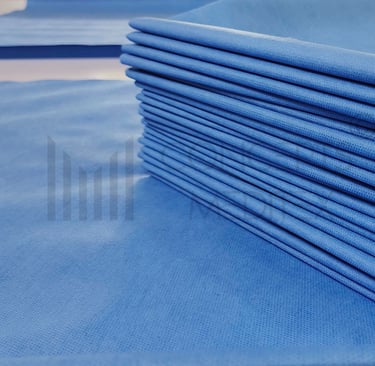Understanding Textile Surgical Sheets: Types and Applications in Hospital Settings


Introduction to Textile Surgical Sheets
Textile surgical sheets are vital components in the operating room, providing both comfort and safety for patients and medical staff. These sheets are designed to meet stringent hygiene standards while facilitating ease of use during surgical procedures. As hospitals strive to improve their operational efficiency, understanding the different types of textile surgical sheets and their specific applications is essential.
Types of Textile Surgical Sheets
Several types of textile surgical sheets are available in the market, each tailored for distinct clinical environments. Commonly used materials include cotton, polyester, and blends, each offering unique benefits.
Cotton surgical sheets are highly breathable and provide a soft touch against the patient's skin, making them ideal for prolonged procedures. They are also easy to launder and maintain, ensuring they remain hygienic for multiple uses.
On the other hand, polyester sheets are known for their durability and resistance to wear and tear, making them suitable for high-traffic areas within the hospital. Furthermore, they are often treated with antimicrobial finishes to promote infection control.
In recent years, hybrid materials combining cotton and polyester have emerged, aiming to balance both comfort and durability. These innovative fabrics can enhance the overall patient experience without compromising on the necessary protective qualities required in surgical environments.
Applications of Textile Surgical Sheets
The applications of textile surgical sheets extend beyond just covering operating tables. They play a crucial role in various surgical settings, including outpatient clinics, diagnostic centers, and emergency rooms. One key application is in minimizing the risk of cross-contamination during surgeries. Surgical sheets act as a barrier between the sterile operating field and potential contaminants.
Moreover, textile surgical sheets can be customized to fit different surgical instruments and environments. For instance, some sheets feature specific designs that facilitate easy access to patients during monitoring or examination without sacrificing their sterile status. This adaptability enhances procedural efficiency, allowing medical teams to focus on providing the best care.
In addition to protection, the aesthetic value of surgical sheets should not be neglected. Hospitals increasingly recognize that a visually appealing environment can significantly impact patient comfort and trust. Therefore, hospitals may choose sheets in various colors or patterns that align with their branding, ultimately contributing to a calming atmosphere.
Conclusion
In conclusion, textile surgical sheets are essential tools in modern healthcare settings, combining functionality with patient-centered care. By understanding the different types of textile surgical sheets and their applications, healthcare providers can make informed decisions that enhance both the quality of care and the overall patient experience. As we continue to innovate and improve our healthcare practices, the significance of proper surgical textiles cannot be overlooked.
